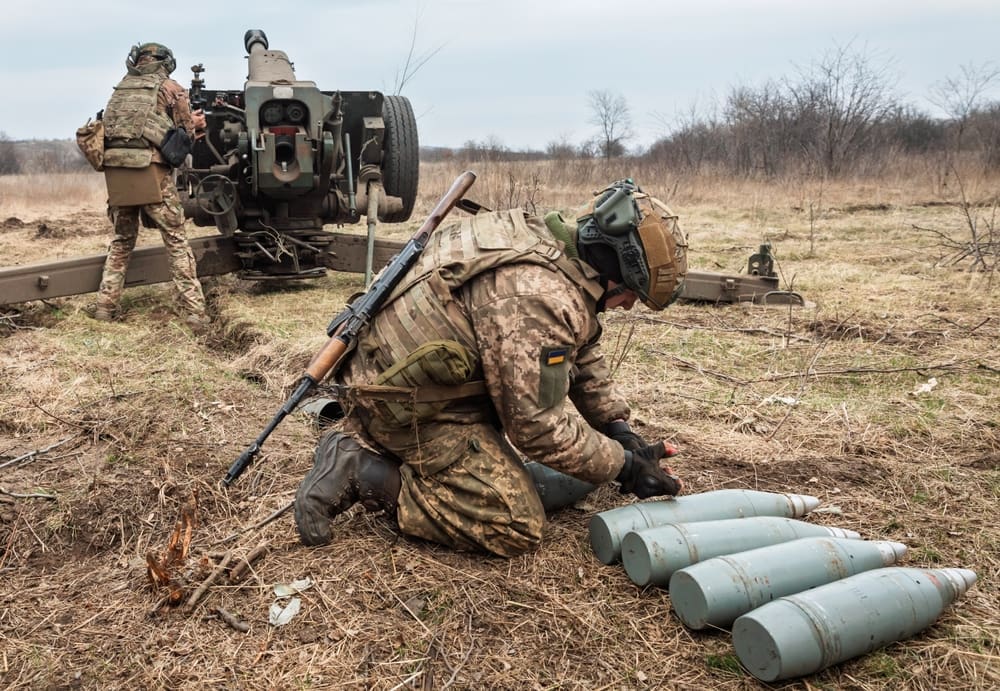The ongoing conflict between Russia and Ukraine has prompted several European Union countries to reconsider the use of anti-personnel mines, potentially reintroducing them to Europe despite their longstanding prohibition under the Anti-Personnel Mine Ban Convention. Estonia, Finland, Latvia, Lithuania, and Poland have announced intentions to withdraw from the treaty, which has been in place since 1997 and prohibits the use, stockpiling, production, and transfer of anti-personnel mines.
The treaty, signed by 164 states, includes all EU members as well as the majority of African, Asian, and American countries. However, notable absentees from the treaty include China, India, Iran, Israel, North Korea, Russia, South Korea, and the United States, along with several Arab nations. According to the Landmine Monitor 2024 report, anti-personnel mines were extensively used worldwide in 2024, with Russia’s invasion of Ukraine contributing significantly to the issue, resulting in Ukraine becoming the most heavily mined country globally.
These mines are not only used by national armies but also by non-state armed groups in regions such as Colombia, Gaza, India, Myanmar, and Pakistan, among others. The report highlights that at least 58 countries are currently affected by anti-personnel mines.
Anti-personnel mines have been described as “weapons from the past” due to their disproportionate impact on civilians, particularly children. They often result in casualties within the military’s own ranks and pose significant challenges for clearance, which is both costly and time-consuming. Despite the global efforts to eliminate these mines, they caused 833 casualties in 2023, marking the highest annual number since 2011. Beyond fatalities, they leave behind many injured and maimed individuals, with civilians comprising 84% of all recorded casualties.
The defense ministers of Estonia, Latvia, Lithuania, and Poland have justified their recommendation to withdraw from the Ottawa Convention by citing a deteriorated security situation in the Baltic region. While Estonia’s Defense Ministry stated there are no immediate plans to develop or use anti-personnel mines, the Baltic countries emphasized their readiness to defend their territory and freedom by any means necessary. Finland’s defense minister echoed similar sentiments, highlighting the need for versatility in responding to changing security environments.
The European Union’s institutions, while acknowledging the plans of these countries, maintain a firm stance against the use of anti-personnel mines. The European Commission has refrained from condemning the Baltic states’ decisions but reiterated its financial contributions to humanitarian mine action. The European Parliament’s annual report on security and defense policy included a motion condemning the intention to withdraw from the 1997 Convention, though it ultimately supported the Baltic countries’ steps, attributing them to Russian aggression.
Understanding the Impact
The potential reintroduction of anti-personnel mines in Europe could have significant implications for both civilian populations and military strategies. The decision by some EU countries to withdraw from the Anti-Personnel Mine Ban Convention may lead to increased risks for civilians, particularly in conflict zones where mines are often left long after hostilities cease. This could result in higher casualty rates among non-combatants, including children and women, who are disproportionately affected by these hidden dangers.
For the military, the reintroduction of mines could alter defense strategies, providing a means to deter or delay enemy forces. However, this comes with the risk of harming friendly troops and complicating post-conflict recovery efforts due to the challenges of mine clearance. The decision also raises ethical concerns, as it may encourage other nations to reconsider their commitments to disarmament treaties, potentially leading to a resurgence of mine usage globally.
On a broader scale, the move could strain diplomatic relations within the EU and with other treaty signatories, as it challenges the collective commitment to humanitarian disarmament. The decision underscores the complexities of balancing national security interests with international humanitarian obligations, highlighting the need for continued dialogue and cooperation to address the evolving security landscape.














